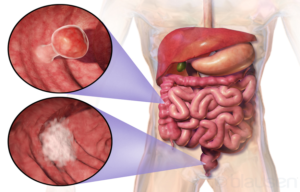He experiences symptoms of muscle stiffness, slow movements and trembling limbs. When a patient has 2 out of 3 of these symptoms, the disease is diagnosed. Other disorders occur, such as pain, in particular cramps, great fatigue, slurred speech, walking, depression, etc.
The disease progresses slowly: when it is diagnosed, it has generally been in development for 5 to 10 years. It causes a significant handicap . The treatments aim to manage it and limit its progression in different forms.
What are the treatments for Parkinson’s disease?
Drug treatments
The drugs aim to compensate for the dopamine supply since it is this which is lacking and impairs the control of movements. They are adapted according to the evolution of the disease in patients.
These substances compensate for the lack of dopamine in three ways. Either they reproduce its effect, or they are transformed into dopamine in the brain (these are “precursors”), or they block its degradation process. Various drugs act in this direction:
The catches are oral and the progressive dosage. Other routes of administration: subcutaneous (pump, pen injector), by an intestinal pump, or a patch diffusing a dopaminergic agonist by the transcutaneous route.
Non-drug treatments
Physiotherapy and speech therapy, prescribed from the diagnosis, help to live better by maintaining the muscles and fighting against speech and swallowing difficulties. Sport is encouraged, especially at the beginning of the disease, to stretch the muscles and stimulate the production of dopamine. The practice must be frequent (at least 4 times a week) and intense. Speech therapy helps the patient by training his facial muscles. It also gives him the confidence to continue his social life .
Acupuncture fights the blockages encountered. Dance teaches you to control your movements. It is also an activity practiced in a group that breaks the isolation caused by the disease. The Alexander technique rehabilitates by correcting postures and improves coordination, based on the unity between the spine and the head.
Finally, surgery can be performed when medication is no longer sufficient. For example, with neurostimulation, which consists of sending electrical impulses to the parts of the brain responsible for movement disorders.
What are the side effects of the drugs?
The drugs cause reversible side effects such as nausea and vomiting, low blood pressure, drowsiness or insomnia, visual or auditory hallucinations, apathy, anxiety, depression etc.
Dyskinesias ( abnormal involuntary movements) are caused by dopamine sometimes stimulating movement too much, especially during treatment with Levodopa.
Impulse control disorders (ICD) such as gambling, shopping or eating addiction , hypersexuality or hyperactivity affect only a minority of people treated. They are linked to the effect of dopamine: it pushes the patient to excessive action. Giving in to impulse, these acts have negative repercussions on the life of the patient and those around him. These addictions are developed by patients on dopaminergic agonists.
These last two undesirable effects can be resorbed thanks to a revision of the dosages.
Relatives and the affected person must be vigilant to the indicator signs and report these effects to adapt the treatment, in dialogue with the neurologist.



